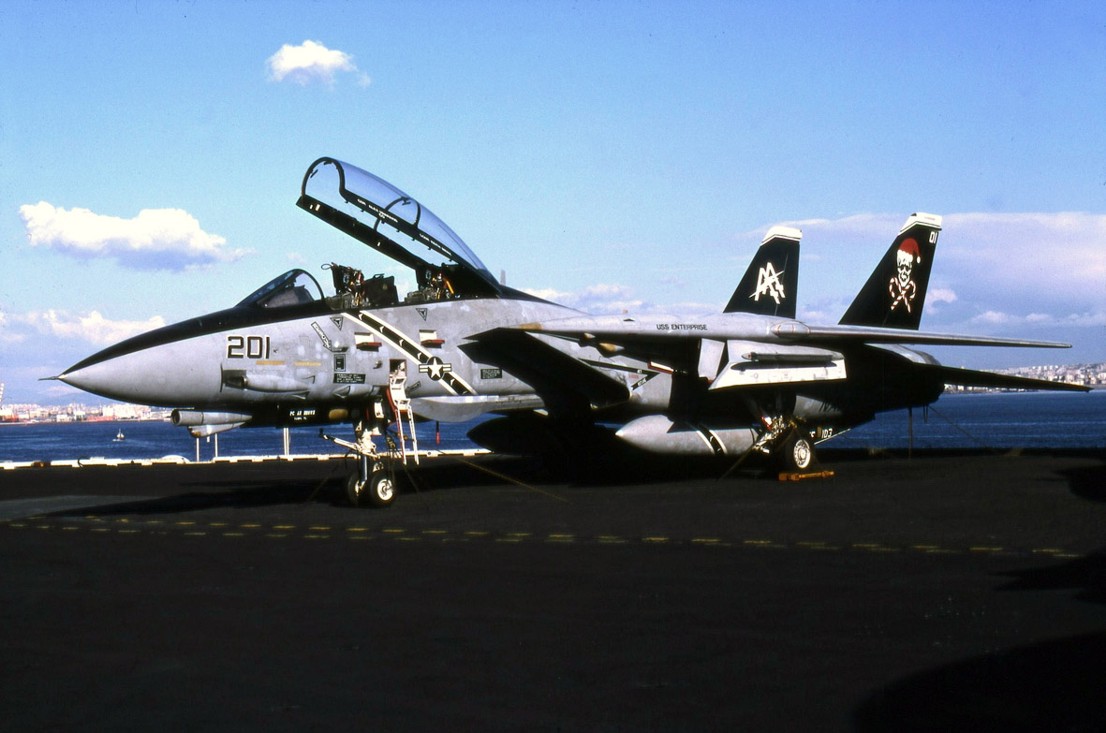The interesting photos in this post feature the two F-14B Tomcats belonging to US Navy Fighter Squadron 103 which wore the festive Jolly Rogers insignia and earned the nickname “Santa Cat”.
The interesting photos in this post feature the two F-14 Tomcats belonging to US Navy Fighter Squadron 103 (VF-103) which wore the festive Jolly Rogers insignia and earned the nickname “SantanCat”.
The first one, F-14B BuNo 163224 Modex 201, was deployed aboard the USS Enterprise (CVN-65) and received the Santa Catnpaint scheme in December 1996.

The second Tomcat, F-14B BuNo 161435 Modex 103, was deployed aboard the USS George Washington (CVN-73) and received the Santa Cat paint scheme in December of 2000.

VF-103 was activated in 1952. Three US Navy squadrons have used the name and insignia of the Jolly Roger: VF-61 (originally VF-17), VF-84, and VFA-103. While these are distinctly different squadrons that have no lineal linkage, they all share the same Jolly Rogers name, the skull and crossbones insignia, and traditions.
VF-103 began life as an F4U Corsair squadron and after progressing through the F9F Cougar, F-8 Crusader, and F-4 Phantom II, it was among the last fighter squadrons to transition to the F-14A Tomcat. In 1989, they upgraded to a more powerful breed of Tomcat, the F-14B.
The B-series F-14 made the iconic 1970s-era air superiority fighter into a formidable multi-role strike aircraft after it pioneered the operational use of the LANTIRN system to drop laser-guided bombs deep into Serbian territory. This led to the unofficial nickname of “Bombcat” to differentiate it from its previously just air-to-air predecessors.
When VF-84 was disestablished in 1995, VF-103 abandoned its “Sluggers” nickname and adopted the famous “Jolly Rogers” name and insignia for itself. After several deployments to the Persian Gulf, VF-103 deployed with the F-14B for the final time in 2004 aboard the USS John F. Kennedy before transitioning to the F/A-18F Super Hornets it operates today.
Photo by U.S. Navy

